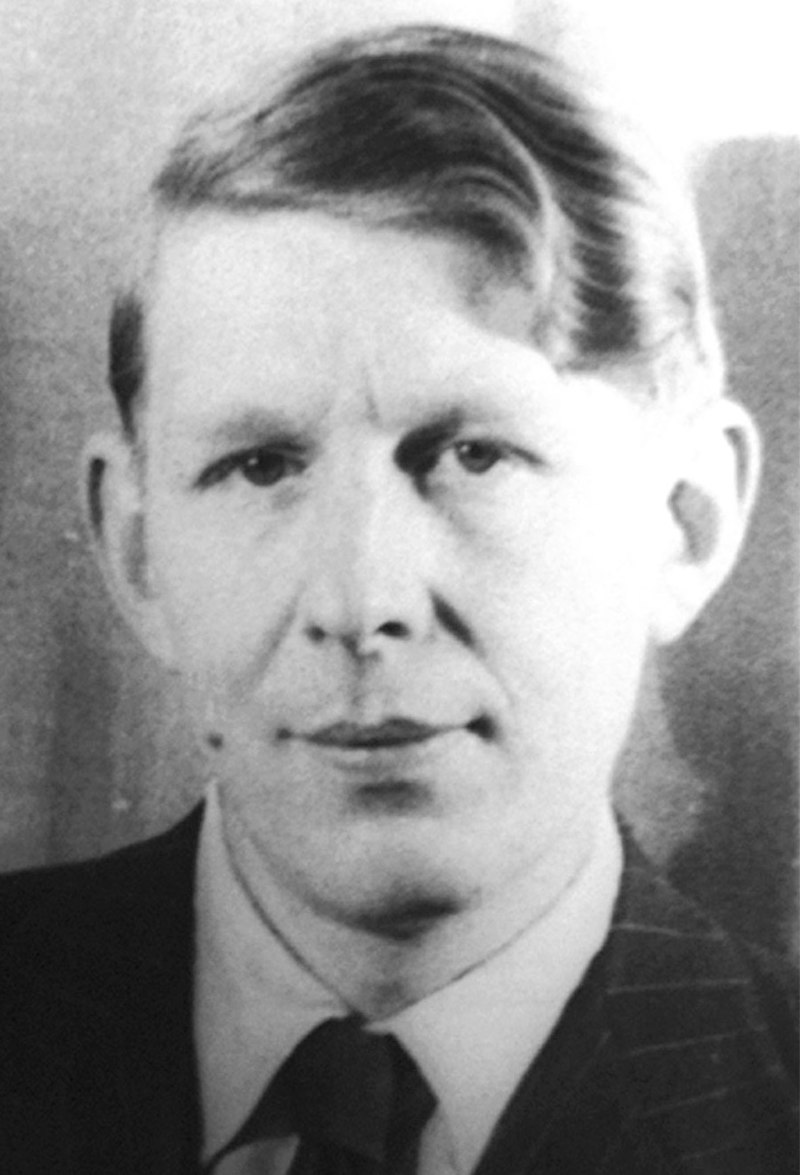Photo: W. H. Auden
The subject of this book on poetry is the alcaic metre. You may be forgiven for not being familiar with it, as it has only rarely been used in English poetry: this is the first book on its use in English.
Its greatest exponent was Horace (65-8 BCE), with an output in alcaic of 37 poems in 317 stanzas. The form was invented by Alcaeus, who died in 580 BCE. “Only one other important Roman writer, the first-century poet Statius, wrote in alcaics,” author John Talbot tells us, “and even then in only one poem of 15 stanzas.”
Talbot is associate professor of English Literature at Brigham Young University, and in this fascinating book he has identified a significant gap in poetic analysis. Since L.P. Wilkinson in 1945, “scholars and critics of both Alcaeus and Horace rarely had anything to say about the aesthetic qualities of the alcaic. Major commentaries on Horace had little to say about metre as a feature of style and expressiveness. The exceptions to this rule are almost comically rare.” Talbot began writing about alcaics in 2001, and in this book he welcomes a renewed interest in it, noting in particular a 2012 article by Andrew Becker, “which focused on the musical and acoustic qualities of the stanza.”
The book begins with a look at some poetry by Robert Frost. This is a most interesting discussion, but it may confuse some readers as it deals with a completely different poetic metre, not the alcaic. More to the point is a look at a famous poem written by Wilfrid Owen in World War I, and published in 1920. In the poem Dulce Et Decorum Est, Owen takes lines from Horace but fractures them. The line from Horace reads “It is sweet and fitting to die for one’s country,” but Owen puts the phrase on two lines, not one, and calls it “The old Lie.”
As Talbot writes, this is “Owen’s distorting of the alcaic metre, the violence done to Horace’s metrical voice. That element of violence needs recovering by a study such as this, since recognizing it requires a kind of literary training that has mostly vanished.” In a poem about violence, Talbot makes the profound claim that Owen’s undoing of Horace’s alcaic “is the subtlest and deepest kind of violence in the poem.”
It is truly extraordinary that even for such a famous poem as the one by Owens, “No editor, however helpful on other aspects of Owens’ debt to Horace, has ever supplied a footnote explaining how it recalls, but then undoes, the alcaic metre of Horace’s poem.” What Owen did is neatly explained by Talbot. “Quoting Horace’s words only, he misquotes the alcaic metre, wrests the words from their Latin metrical template and sets them marching to the beats of his English iambs. The ancient metre is felt by its absence, not its presence.”
A key element of the book deals with Alfred, Lord Tennyson, who explored different ways to use the alcaic metre. “It would be hard to imagine how the trajectory of any five related poems could better illustrate the range of options available to an English poet receptive enough to allow a classical metre to shape and enrich the poetry of his native tongue.” In fact, it led Tennyson to create “a new English stanza in its own right” in his 1891 poem To the Master of Balliol.
Another poet who experimented with alcaic was W.H. Auden. Beginning in 1939, he created stanzas with the same syllable count as alcaic, and it became a “hallmark of Auden’s middle and later career…With his eulogy to Freud and the ‘Epilogue’ to New Year Letter we find Auden, first among English poets, writing several poems in the strict alcaic syllable-count which are both successful as poems and also major works.”
In 1948, Auden lamented that “the educated man of today and tomorrow can read neither Latin nor Greek.” But a few poets now are working in the Auden tradition. One is Marilyn Hacker, who has written hundreds of alcaic strophes that descend “chiefly from Auden rather than Horace.”
In addition to bringing attention to the alcaic, what this book does most is make readers of poetry realise that a complete appreciation of poetry is impossible without the eye and ear being attuned to the metrical form that poetry is written in. As such, this book deserves a much wider readership than the title might otherwise entice.
The Alcaic Metre in the English Imagination is by Bloomsbury. In paperback, it lists for $27.96.
Photo: W H Auden in 1939. Courtesy Wikimedia Commons
Definition: An alcaic stanza is composed of 4 lines of varied metrical feet, with 5 long syllables in the first 2 lines, 4 in the third and fourth lines, and an unaccented syllable at the beginning of the first three lines. An example from Horace (Odes II 3):
Aequam memento rebus in arduis
servare mentem, non secus in bonis
ab insolenti temperatam
laetitia, moriture Delli,
seu maestus omni tempore vixeris,
seu te in remoto gramine per dies
festos reclinatum bearis
interiore nota Falerni.
(Translation: Remember, Dellius – for one day you will die – to keep your mind calm in difficult times, and equally in good times to curb it from excessive joy, whether you live always in sadness or whether on festive days, stretched out in a sequestered grassy spot, you treat yourself to a choice vintage of Falernian wine.)
Auden wrote in the poem Ischia:
nothing is free, whatever you charge shall be paid,
that these days of exotic splendour may stand out
in each lifetime like marble
mileposts in an alluvial land.
